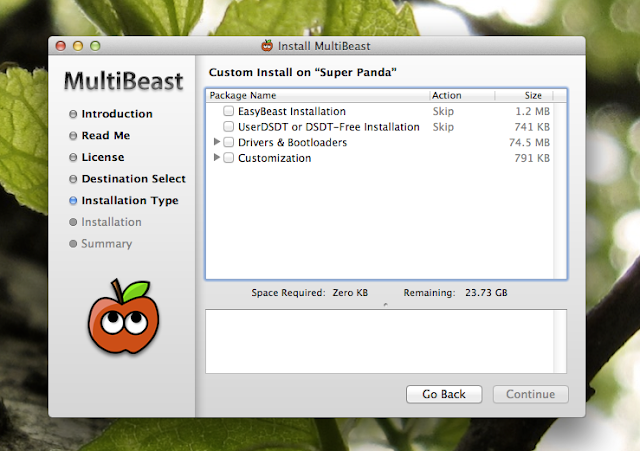
- Trim For Os X Lion Download
- Trim For Os X Lion 10 7 Free Download
- Trim For Os X Lion King
- Os X Snow Leopard
If you need to purchase Mac OS X 10.7 Lion, you may order it from this page. The most current version of OS X is OS X 10.9 Mavericks. To learn more, please click here. What do you receive: An email with a content code for the Mac App Store. Note: Content codes are usually delivered within 1 business day but may occasionally take longer.
Trim For Os X Lion Download
While Apple has already started incorporating SSDs into its Macs, it hasn't yet added TRIM, a specific type of operating system support intended to coordinate disk use between the system and the SSD controller. The feature was previously detailed as having 'no' support in System Profiler (below, top).
The new Lion developer preview is reported to add TRIM support however, with users of Apple SSDs noting a 'yes' (actually 'oui') for support according to a report by the French blog MacGenerations (below, bottom).

Unlike conventional magnetic hard drives, SSDs must be erased before being rewritten with new data, somewhat similar to CD-RW disc. This housekeeping task can be managed by some SSD controllers, but the TRIM command is designed to keep SSDs efficiently optimized at all times, preventing a gradual decline in performance as garbage stacks up.
Cleaning up unused bits of deleted files on SSDs requires a sophisticated balancing act between making sure the drive is clean and ready for new write operations, while also limiting unnecessary wear, as the flash cells used by the devices wear out relatively quickly after a finite number of erase/write cycles, compared to the very long life of the recording surfaces of magnetic storage disks.
The TRIM command is part of the ATA interface standard. So far, it appears Apple's support in Lion is only activated for SSDs shipped by the company and not third party devices, but this is likely to be fleshed out more as Lion develops.
AppleInsider has affiliate partnerships and may earn commission on products purchased through affiliate links. These partnerships do not influence our editorial content.
One of the nice surprises (though it shouldn’t have been a surprise) in the Mac OS X Lion preview that Apple released last week is the addition of TRIM support. Since the long-term future of the Mac is with solid state drives, it’s about time added this.
A TRIM command allows an operating system to inform an SSD which data blocks, such as those belonging to a deleted file or affected by a format command, are no longer being used so can be wiped internally. That’s important because the low-level operation of SSDs differs from traditional hard disk drives in the way operating systems handle operations like deleting and formatting. TRIM enables the SSD to handle garbage collection overhead which would otherwise significantly slow down future write operations to the involved blocks, in advance. In other words, it helps maintain optimal performance and extend the life of your SSD.
Mac OS X 10.6 doesn’t optimally handle SSDs. All versions of OS X up to Lion treat SSDs as a Hard Disk Drive when deleting a file or formatting the drive. Treating a SSD in this way will degrade performance over time as the drive’s flash cells are unnecessarily taxed and will wear out after a certain amount of read/write cycles. TRIM doesn’t wear out SSDs and deletes data in a far more efficient way.
Or, as Bit-Tech (http://www.bit-tech.net/hardware/apple/2010/07/01/mac-ssd-performance-tr…) explains: “Unlike a hard drive which can just write straight over that 10KB of space when a new file comes along, when the SSD comes to rewrite data to its 10KB of ‘free’ space in the now dirty cell, in order to retain the 10KB file still there, it must first read that data to its cache or controller, wipe the whole 20KB cell clean and then rewrite the complete set of valid data, old and new, into the cell. While rewriting data has little impact on performance for a hard disk drive, this read-modify-write process can drastically reduce performance on an SSD in comparison to writing to virgin cells, and is one of the main causes of SSD performance degradation following extended heavy use.
Trim For Os X Lion 10 7 Free Download
“…. There is a fix though, in the shape of the TRIM command. This command reorganises written data and scrubs junk data after it’s deleted (triggered by a delete command, clearing the recycle bin or formatting the drive), meaning when the drive comes to write data to that cell again, there’s nothing but nice clean NAND waiting for it. It ensures the optimum write performance, but it requires both software support from the OS and firmware support from the SSD itself.”
Trim For Os X Lion King
Obviously, since can get Macs with solid state drives, a lack of TRIM-ming doesn’t mean SSDs won’t work with Macs. But they’ll work even better in tandem when Mac OS X meets TRIM. And the SSD in your Mac should last longer.
Os X Snow Leopard
— Dennis Sellers